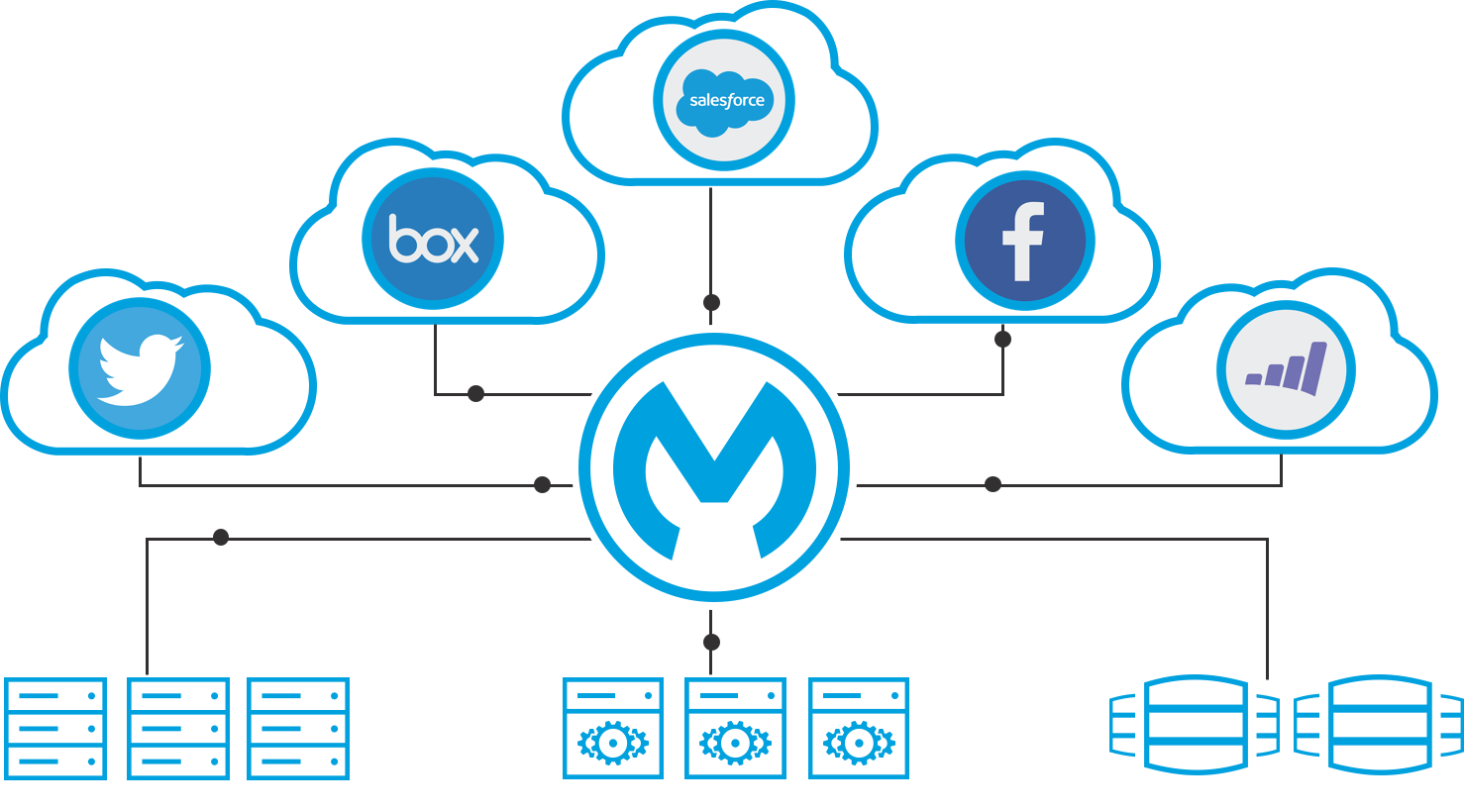- Home
- Resources
- Articles
- Hybrid integration
- Middleware technology for integration
Middleware technologies connect the enterprise
The explosion of APIs, devices, applications, and data sources has complicated the task of building connectivity across the enterprise. As organizations are connecting to applications outside of their four walls, they risk becoming fragmented. Moreover, existing on-premise systems, such as AS/400 and ERPs, need to be able to communicate both internally and externally. Businesses are taking the “best of breed” approach, implementing specific applications and services to manage certain departments within their enterprise. Though this approach provides businesses with powerful tools to run their enterprise, it presents them with the challenge of integration.
What is Middleware?
And what does it do?
Middleware technologies are often employed to eliminate the pain of integration. A middleware solution is essentially a layer between two systems that makes it easy for the two to communicate. It can be considered the glue that holds together applications, making seamless connectivity possible without requiring the two applications to communicate directly. In a highly distributed environment in which businesses need to connect with legacy systems, cloud and SaaS applications, and business management software such as SAP and Salesforce, the role of a middleware technology is critical.
Legacy systems are of great importance to established businesses, as a large sum of critical data resides within them. Despite being inflexible, legacy systems are a significant part of a business, thus stability, scalability, interoperability, and secure communication is necessary. Moreover, as technology changes, the number of and types of devices (mobile, laptops, tablets, etc) running within a business environment increases as well, giving businesses yet another challenge to overcome. Lastly, the emergence of SaaS vendors has made it much easier for organizations to take a “best of breed” approach. Businesses can employ services from vendors such as Salesforce.com and Jobvite, who are leaders in CRM and recruiting solutions, to manage specific areas of their enterprise. As cloud computing increases in popularity, it also revolutionizes middleware and the role of integration. In order for a business to run efficiently and effectively, a middleware connectivity solution is needed to enable connectivity throughout the enterprise, on-premise and in the cloud.
Mule as an ESB, a middleware solution
MuleSoft provides a middleware solution to help businesses overcome the challenges of integration. Mule Enterprise Service Bus is a middleware technology that quickly, easily, and securely connects the enterprise. Unlike typical middleware software, Mule as an ESB is a Java-based middleware solution that is easy to use and easy to scale. It can also be used as the middleware connectivity tool with .NET connectivity, providing a more reliable and easy to use platform solution than other options on the market. Mule Enterprise Service Bus, working with other components of Anypoint Platform™, connects the New Enterprise with ease:

- CloudHub: An integration platform as a service (iPaaS) that enables businesses to build and offer reusable integration applications without the hassle of custom code. CloudHub can work with Mule as an ESB to create an efficient ecosystem with connectivity between enterprise systems, custom apps, databases, partners, customers, and cloud or SaaS-based applications.
- Anypoint Enterprise Security: Protect against threats and safeguard systems from attacks easily. Anypoint Enterprise Security makes it easy to maintain data integrity and protect APIs and endpoints.
- Mule Enterprise management: Middleware connectivity management with MuleSoft makes it easy for organizations to obtain visibility in order to easily manage enterprise resources and operations, all the while equipping businesses to tackle any errors that may arise.
- DataWeave: Extract, load, filter, and transform data with a simple yet powerful data mapping. With little coding required, it is easy to deliver visual designs of complex data transformations to be used with Mule flows.
- Anypoint Studio: A drag and drop graphical design environment that allows users to create integrations quickly and easily. Any developer with Java experience can be productive in minutes.
- Anypoint Service registry: As the next generation platform for SOA Governance, Anypoint Service Registry offers policy and contract management, service analytics monitoring, service virtualizer, and service repository.
These solutions provide businesses what they need in order to create connectivity across the enterprise. Mule Enterprise Service Bus serves as a middleware system, creating a buffer between services and consumers, allowing for simplified yet powerful integration. Mule as an ESB makes it easy to connect to the cloud and build better Service Oriented Architecture (SOA). Moreover, typical business needs such as integration with CRM and ERP systems can be implemented easily, and customized accordingly if necessary. Working with other components of Anypoint Platform, Mule as an ESB goes beyond its duties as an open source middleware solution to extend connectivity for businesses.
Sign up for Anypoint Platform, or contact us today to see how MuleSoft can help your business move forward through deeper connectivity.



